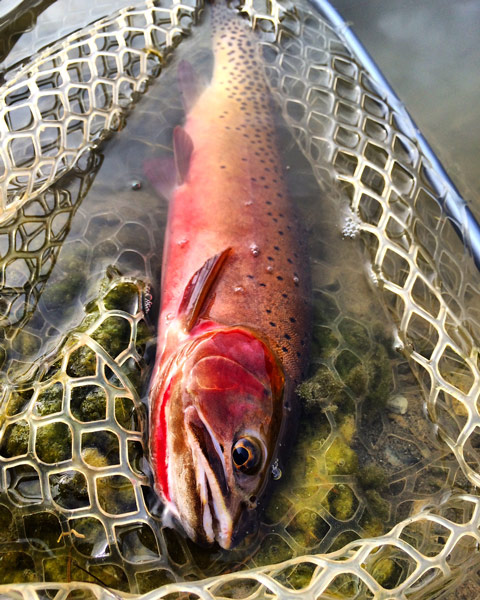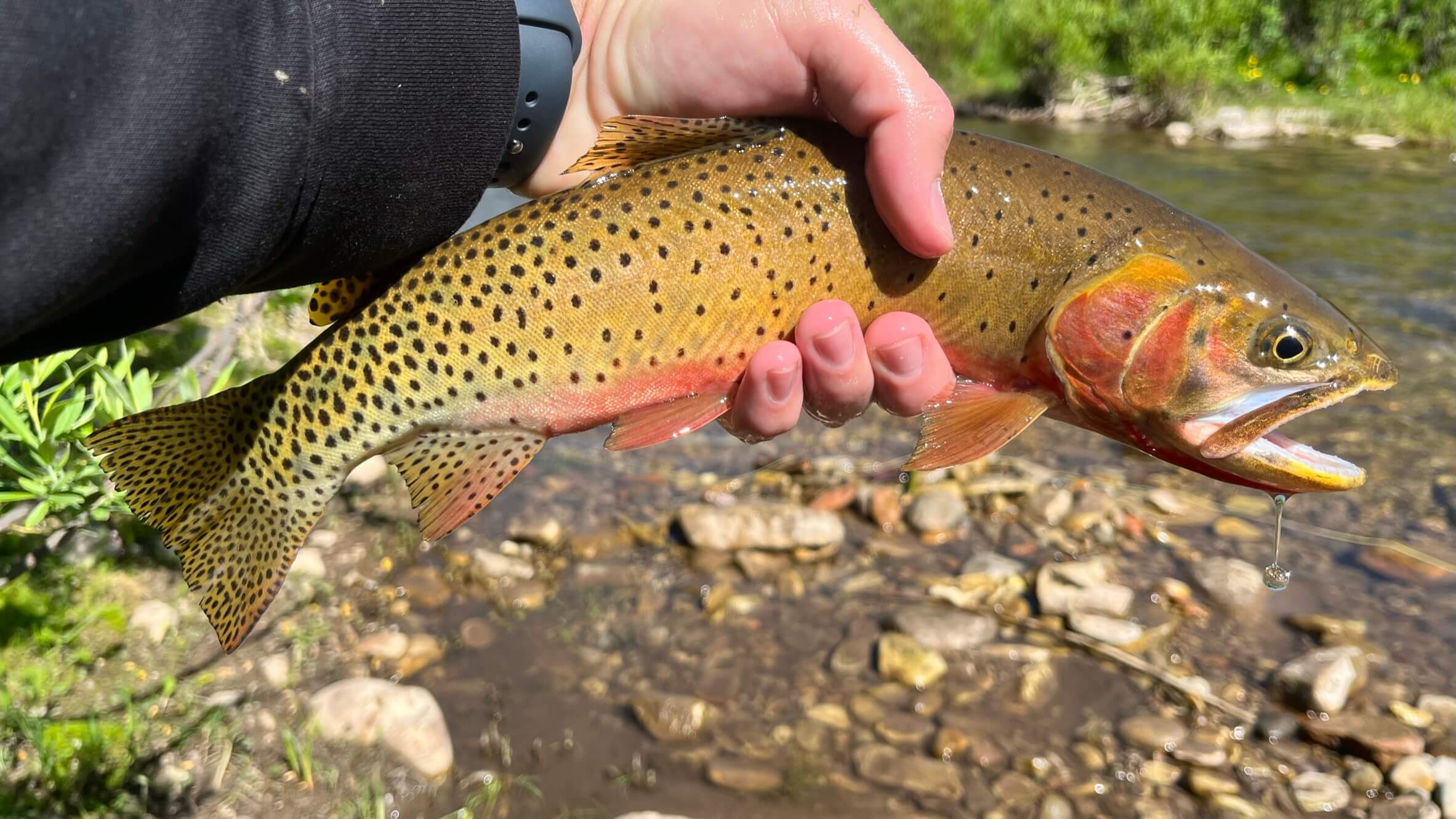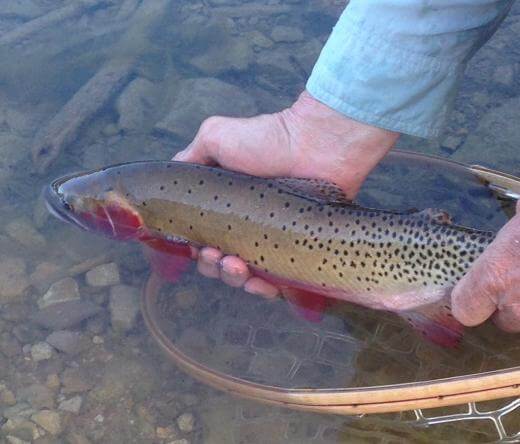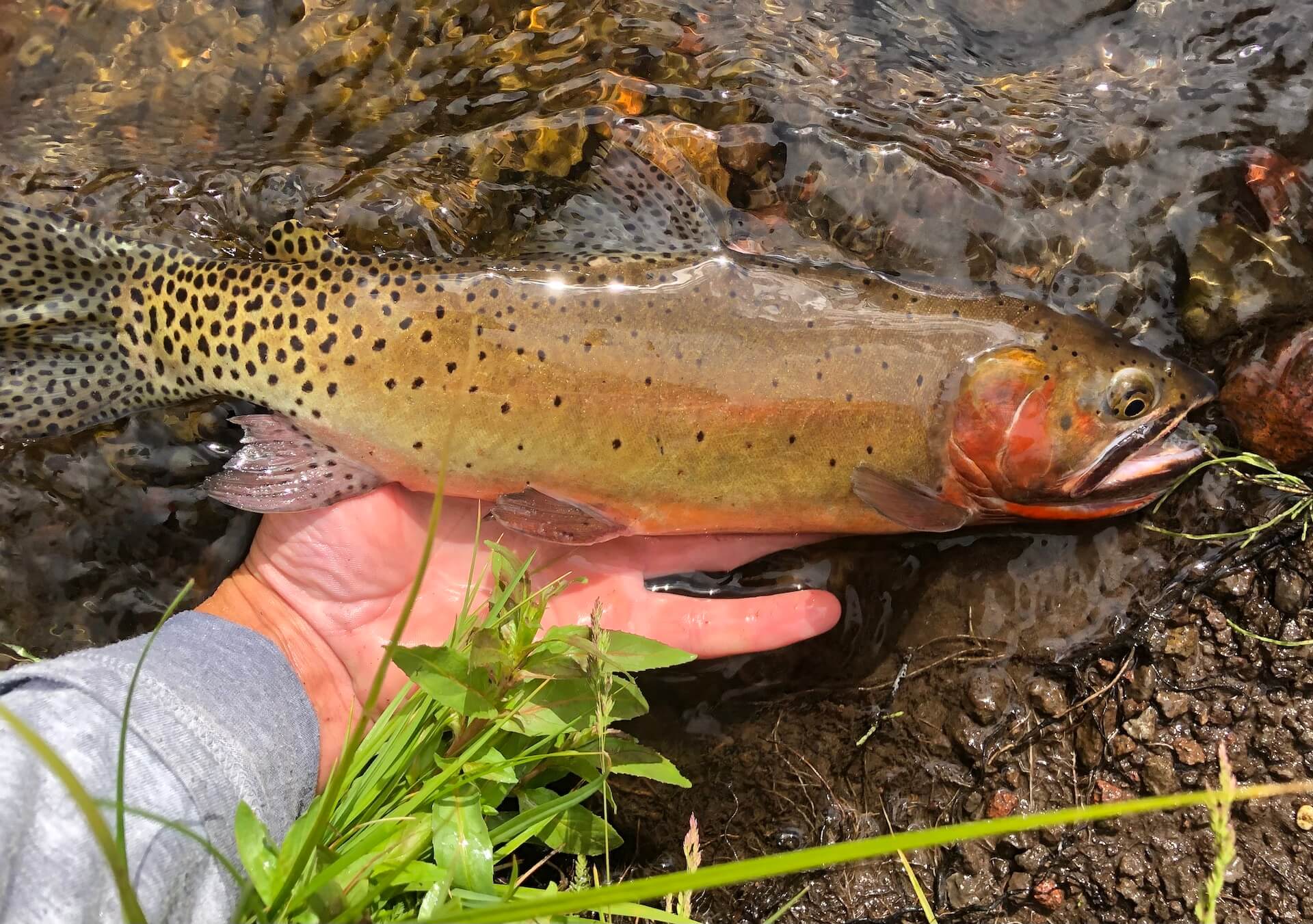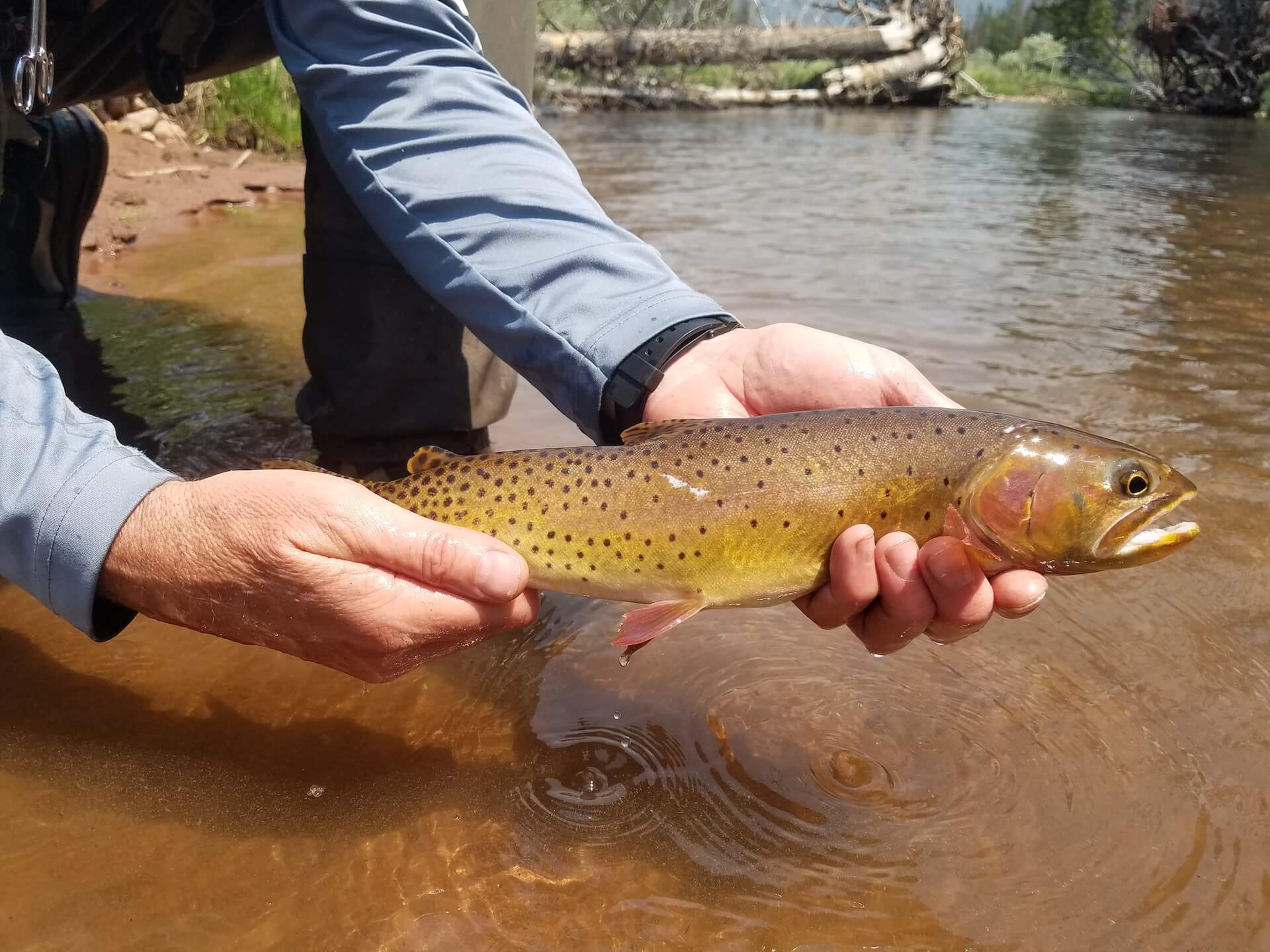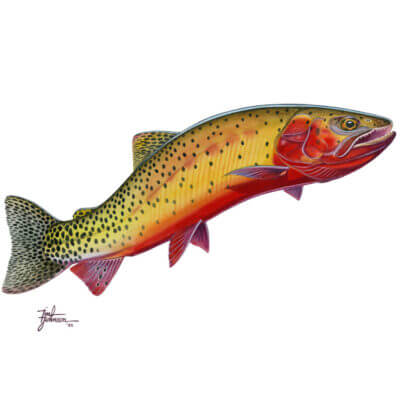Colorado River
An Artist’s Dream – Colorado River Cutthroat
Oncorhynchus virginalis pleuriticus
While all cutthroat trout can turn a beautiful bright red during the spawn, the Colorado River cutthroat seems to show off its colors year round, making it a favorite with artists and photographers. This subspecies is also at home in some of the most beautiful places Utah has to offer.
Native to the Colorado and Green River drainages, Colorado River cutts are found on the eastern side of the state’s major mountain ranges like the Uintas and Wasatch Plateau. They can be located anywhere from high elevation lakes in the Uintas all the way down to the streams and lakes on Boulder Mountain in the southern part of the state.
Colorado River cutthroat are notable due to the oranges, reds, and crimson colorations they can display at all stages of life. And while river-dwelling specimens can be beautiful in their own right, some lake-dwellers become exceptionally dark and gorgeous, particularly in the Boulder Mountains.
There’s nothing quite like catching one of these absolute beauties miles and miles away from civilization way up in the high country, so be sure to add these fish to your bucket list.
New research has supported the existence of separate lineages of Colorado River cutthroat trout (CRCT), two of which can be found within Utah’s waters, the Green Lineage CRCT and Blue Lineage CRCT. Both lineages can be counted towards the Slam’s CRCT subspecies requirement. But for more information, refer to the following article: https://www.utahcutthroatslam.org/stocking-cutthroat-in-san-juan-county-for-the-first-time-protecting-a-native-green-gem/
Where to Find Colorado River Cutthroat in Utah
To zoom in, open dialogue and click on “Colorado River Cutthroat Trout”
Colorado River cutthroat trout (CRCT) are native to streams that flow into the Green and Colorado rivers. Any cutthroat trout caught while angling streams that are tributaries to the Green or Colorado rivers will be accepted as a CRCT for the Utah Native Cutthroat Slam. Some headwater lakes in the Uinta Mountains have been historically stocked with non-native cutthroat trout. If you wish to angle CRCT from headwater lakes in the Uinta Mountains, check with the Northern Region UDWR Office (801-476-2740) or Northeastern Region UDWR Office (435-781-9453) for a list of lakes containing native CRCT. While many of the streams containing CRCT in Utah are remote and access can be difficult, the following areas/streams will provide the best opportunities to catch native CRCT in Utah:
North Slope of the Uinta Mountains:
- East Fork of the Blacks Fork
- Little East Fork of the Blacks Fork. While this reach is remote, a trail does parallel the stream.
- West Fork of the Smiths Fork
- Gilbert Creek. This stream was restored to native CRCT in the early 2000s. Angling conditions can be tough as Gilbert Creek is a small, brushy stream.
- Henrys Fork. While this reach is remote, a trail does parallel the stream.
Burnt Fork and tributaries - North and Middle Forks of Sheep Creek (South Fork Sheep Creek currently undergoing cutthroat restoration and is currently likely fishless) and Sheep Creek Lake
South Slope of the Uinta Mountains:
Genetically pure populations:
- Mainstem Whiterocks River from Chepeta Lake outlet to Whiterocks Forest Service campground.
- Reader Creek: CRCT densities are highest upstream of Chepeta Road Crossing.
- Lynn Creek
- Hells Canyon Creek. Angling conditions can be tough as Hells Canyon Creek is a small, brushy stream
- Crater Lake outlet to confluence with the Lake Fork River
- Rock Creek Headwaters Outlet tributaries of Doug and Boot lakes and Jody and Bench Lakes
- South Fork of Rock Creek
- West Fork of the Duchesne River
- South Brownie Creek
Some Hybridization with Yellowstone, Bonneville or Rainbows:
- East Fork Whiterocks River
- Uinta River lower canyon upstream to headwater tributaries. While this reach is remote, a trail does parallel the stream.
- Yellowstone River from Swift Creek trailhead upstream and Garfield Creek
- Lake Fork River upstream and downstream of Moon Lake, downstream to Forest boundary
- Rock Creek upstream of Upper Stillwater Reservoir. While this reach is remote, a trail does parallel the stream.
- Currant Creek Reservoir and tributaries
- Red Creek Reservoir and Red Creek tributary. Highest densities are found in the upper reach. Angling conditions can be tough as Red Creek is a small, brushy stream.
North Tavaputs Plateau:
- Willow Creek (tributary to Strawberry River downstream from Soldier Creek Dam)
- Timber Canyon Creek and Lake Canyon Lake
- West Willow Creek and She Canyon Creek including headwater tributaries
- Strawberry River (from the Pinnacles upstream to Soldier Creek dam)
- West Fork Avintaquin Creek (from DWR WMA property boundary to headwaters)
- Meadow Creek
Southeastern Utah: (for more information contact the Southeastern UDWR Office 435-613-3700)
- White River (Right, Left, and Middle Forks), Scad Valley Creek near Miller Flat Reservoir area
- Ferron Reservoir and Ferron Creek (including tributaries Cove, Indian
- and Big Bear Creeks) as well as Duck Fork reservoir (including tributaries and outflow) and Millsite Reservoir
- Range Creek
Fremont River:
- UM Creek and Pine Creek (south of Bicknell)
Escalante River:
- East and West Forks of Boulder Creek
- Pine Creek (upstream of the Box), Twitchell Creek and White Creek
Southern Utah Lakes: CRCT are stocked annually in several Boulder Mountain lakes, including Dougherty Basin Lake, Round Willow Bottom Reservoir, Long Willow Bottom Reservoir, Pine Creek Reservoir, Solitaire Lake, Crescent Lake, and Short Lake. For a full list of lakes stocked with CRCT, refer to the DWR stocking report (https://dwrapps.utah.gov/fishstocking/Fish) or call the Southern Region Office at 435-865-6100.
Colorado River Cutthroat Facts
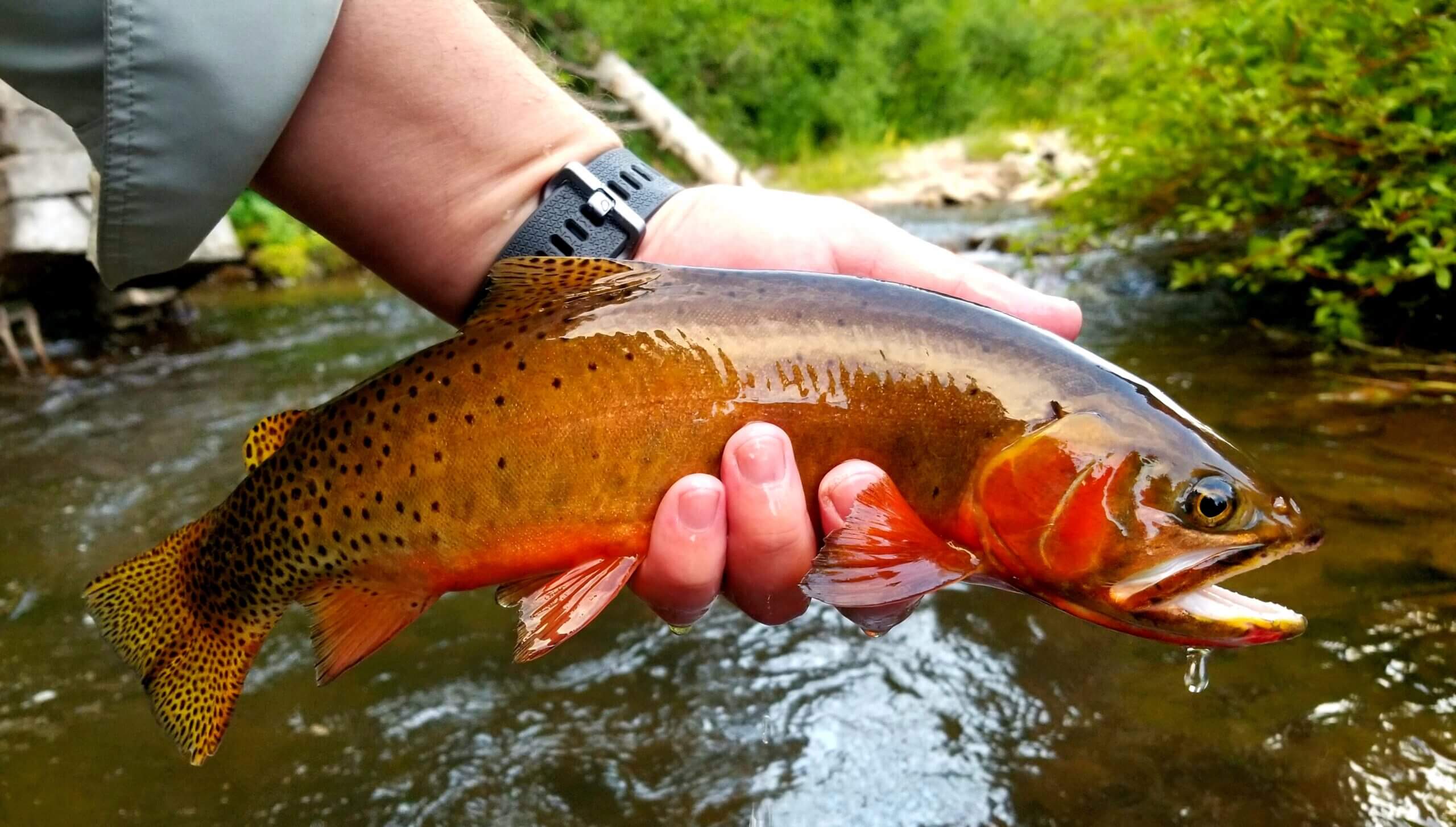
Found in several high elevation streams and lakes in the Uinta Mountains and Boulder Mountains
Currently present in about 30% of its historic range
Has a tendency to be colored very brilliantly when found in the right habitat
Ready to Get Started?
The Utah Cutthroat Slam is a challenge and an adventure. Visit incredible waters to see what trout fishing in Utah was like way back then. Help Trout Unlimited and the Utah Division of Wildlife Resources restore and protect Utah’s incredible trout legacy and have fun along the way.
